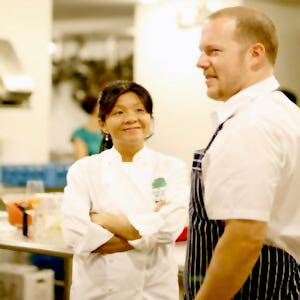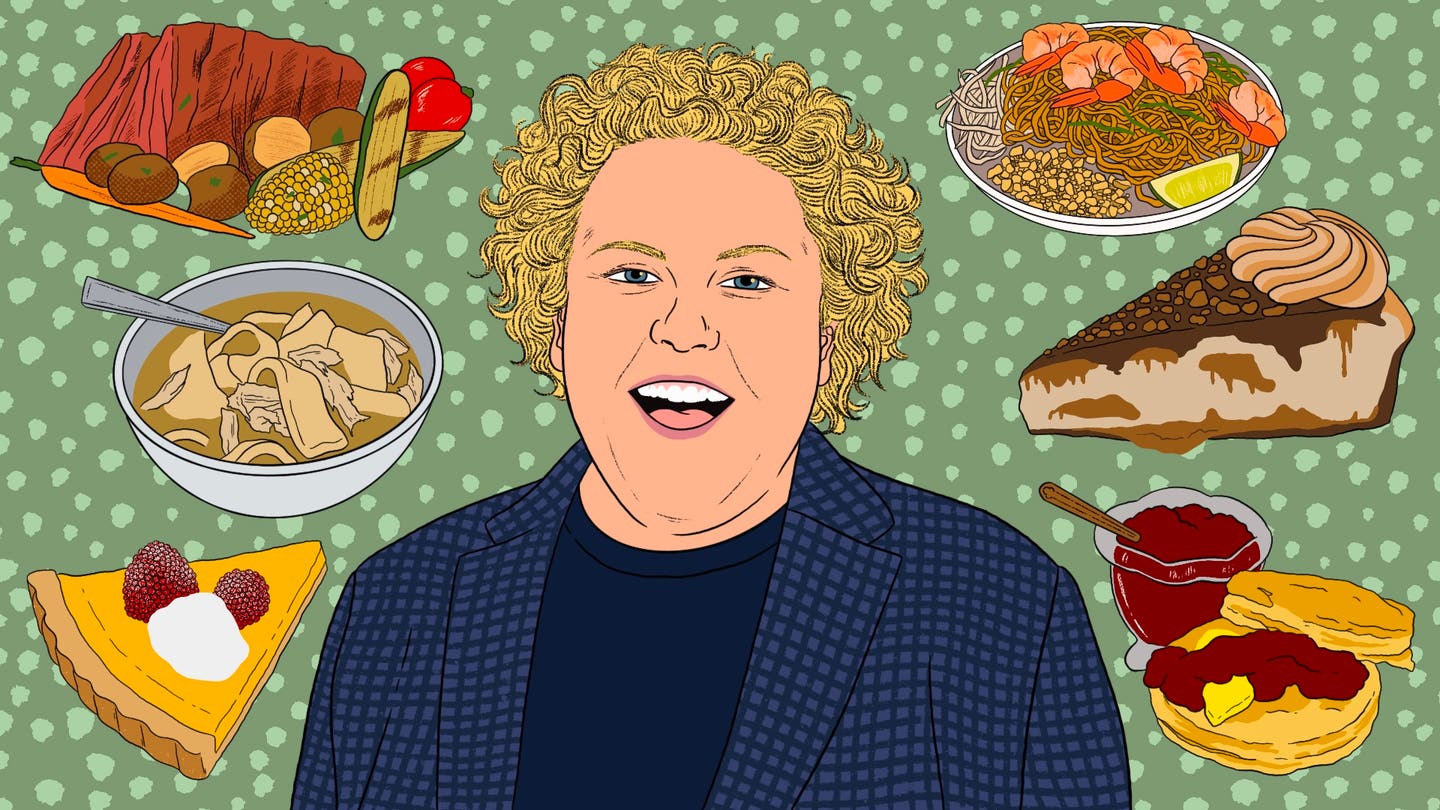
Gender in the Kitchen
Do women roast chicken differently from the way men do? Is it possible to tell whether the ravioli on your plate was rolled by a male chef or by a female? Such was the challenge set before a group of hungry panelists at a recent event, "Gender Confusion: Unraveling the Myth of Gender in the Kitchen", hosted by the Astor Center for Food and Wine Experiences in New York City.
The panelists, who included Food & Wine editor-in-chief Dana Cowin, Serious Eats founder Ed Levine, academic and cookbook author Gwen Hyman, and the award-winning chef of Chicago's Alinea, Grant Achatz, were presented with a tasting menu of two cocktails and five pairs of dishes. Each course featured two chefs, one male and one female, and a common ingredient or theme—fava beans to start, followed by pasta with asparagus and a sardine course, squab for an entree, and rhubarb desserts, to end on a sweet, seasonal note. Unlike on Iron Chef, however, the panelists were not charged with judging the food's quality or taste but were asked to match dish to chef in an admittedly unscientific gastro guessing game.
The notion that men perform differently from women at the stove might seem distasteful, but gender stereotypes thrive in most professional kitchens. Men are said to take more creative risks and prefer complicated, showy techniques, whereas women supposedly choose subtlety and balance over bravado. While this sort of stylistic diversity could be an asset to a restaurant, too much kitchen stereotyping leads to problems, among them a disproportionately low number of opportunities for women.
"Women have been at the helm of the kitchen for only a very short time," Hyman said. "Fifteen years ago, male chefs regularly said that women do not have what it takes to be professional chefs." Despite the authority that Alice Waters of Chez Panisse or Alexandra Guarnaschelli of Butter holds over her kitchen, the general dearth of high-powered women chefs continues today. A 2007 article in the San Francisco Chronicle reported that 91 percent of executive chefs are men who typically earn 20 percent more than their female counterparts. Achatz said that the number of women on staff at his restaurant (five out of 22—above the national average) regularly garners comments from customers. "Some ask why there are so few women, but most are like, 'Wow, I'm glad you have so many,'" he said.
So, what about the food? Can gender really have an effect on how a meal looks or tastes? Although a few of the dishes served to the panelists seemed right out of the pigeonhole playbook ("This is a single woman's cocktail," Cowin said, pulling a long, suggestive strip of grapefruit peel out of a honey-sweetened drink), the panelists agreed that a chef's background, training, and mentors reveal more about his or her cooking than genetic makeup. "Great chefs, whether they are male or female, develop a distinct sense of style," Cowin said. "Ultimately, that style is what will show up on the plate, not their gender."
For the record, Cowin was the panel's undisputed "winner", uncovering subtle clues to guess the chef's gender correctly on five out of the six dishes served. Attribute it to the expertise she has as a seasoned food writer, or attribute it to luck; just don't call it a woman's intuition.
Keep Reading
Continue to Next Story










